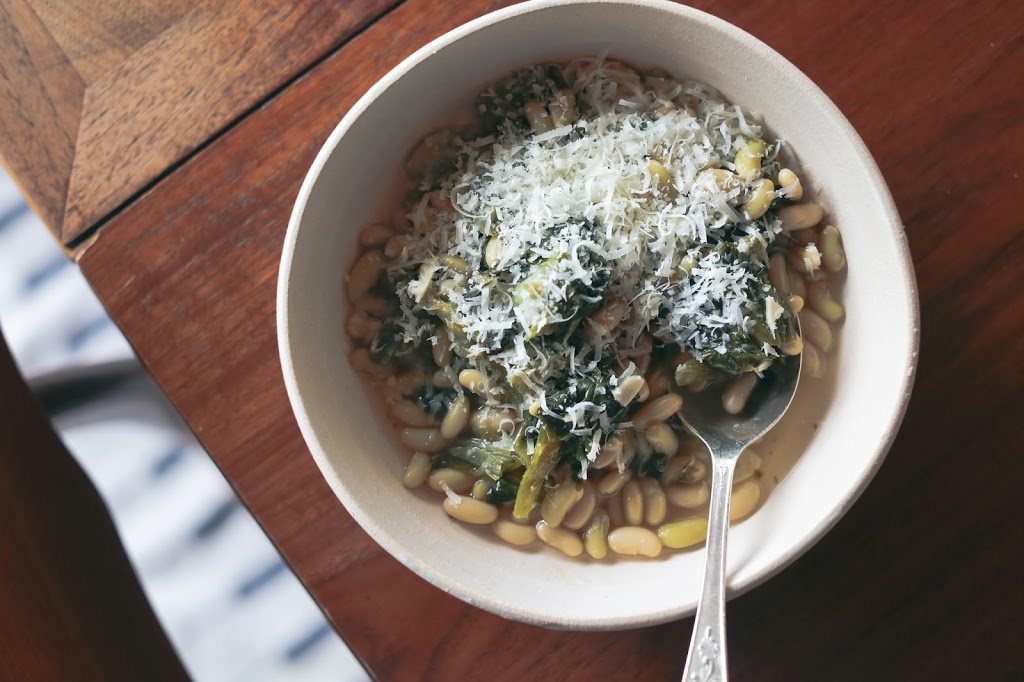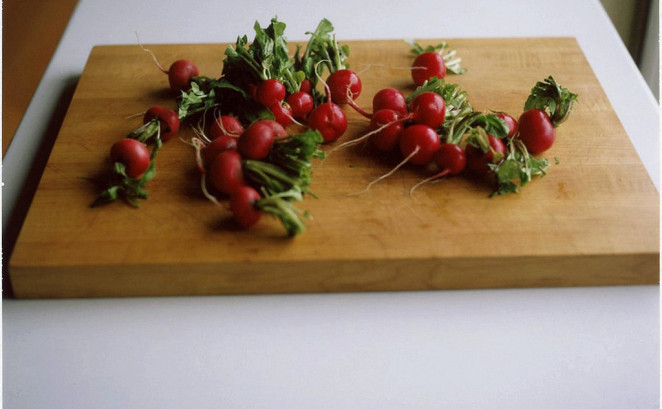Tag: all about braising
On short notice
It’s hard to start a post when I’m bored with the photograph(s) I have for it. The alternate title for this post is “A Life Fraught with Difficulty, by Molly Wizenberg.”
But I am never bored with beans.

I don’t remember how I first learned of Molly Stevens and her classic All About Braising: The Art of Uncomplicated Cooking, but if you’ve been around here for any length of time, you will know that it is a longtime favorite. I bought it shortly after it came out, sometime in 2004. I was in graduate school then, planning to become Michel Foucault, albeit with more hair, fewer turtlenecks, and a vastly inferior command of the French language. Like anyone who has tried to read the borderline unreadable, I had a ton of Post-It flag things in my desk drawer, and I intended to use every last one when I read Discipline and Punish. But then All About Braising came along, and it was so good that I put down my schoolbooks and plastered my Post-It flags all over Molly Stevens’s recipes instead. By the time I was done with it, the book looked like a hastily plucked chicken, sprouting feathery flag things from every third page. And though I cannot say the sequence of events was purely causal, I quit grad school the following year. In the decade since, I’ve cooked more from All About Braising than from any other book.
When I wrote about dried beans a week or so ago, I mentioned a particular Molly Stevens recipe, promising to write about it soon. Here I am. For the past few years, during the colder months, I’ve made this recipe every other week, and occasionally more often than that. Molly, if I may use her first name, calls the recipe Escarole Braised with Cannellini Beans, though I’ve made it with every kind of white, or white-ish, bean I can think of: cannellini, corona, marrow, garbanzo, great northern, navy, and flageolet, cooked from dried, or out of a can. I call it Braised Escarole with Beans. It’s one of my best back-pocket meals, one I can make on short notice, assuming that I can get my hands on a head of escarole, which is a pretty fair assumption to make in the fall and winter. In the crackling heat of the pan, the escarole goes slack and silky, olive green, curling around the plump, creamy beans. This is honest food, old-lady-with-crepey-elbows-in-a-house-dress food, soft and stewy and fragrant with garlic. Everyone in my house likes it, including June, though she thinks the escarole is bok choy and I am not about to correct her, because the child is crazy for bok choy. I know when to leave a good thing alone.
Braised Escarole with Beans
Adapted from All About Braising, by Molly Stevens
The original version of this recipe calls for cannellini beans, but any light-colored bean works. I wouldn’t recommend pinto beans or any other brown or red bean, though; the flavor is too dark and muddy here. And you’ll note that, if you use canned beans rather than beans cooked from dried, you’ll need to add some stock. I like chicken stock – though you could use vegetable, I’m sure – and in a pinch, Better Than Bouillon is more than adequate.
Be sure to have some bread on hand when you serve this, and be sure to toast that bread and rub it with garlic. We usually keep the bread on the side, but you can also ladle the escarole and beans over it and let it get all nice and juicy and sogged.
Cut the head of escarole in half from root end to leaf tips. Working with one half at a time, starting at the leaf tips and working toward the root end, slice the escarole crosswise into roughly 1 ½-inch strips. (Discard the little nub of root end when you get to it; it’s usually a little browned and dry.) Scoop the escarole into a salad spinner or large bowl, and add cold water to cover generously. Use your hands to swish the leaves around, rubbing with your thumb to loosen any stubborn dirt. Then let the escarole sit in the water undisturbed for a few minutes, to allow the dirt to fall to the bottom of the bowl. Lift the basket from the salad spinner (or lift handfuls of escarole from the bowl into a colander), and drain the water left in the bowl. Replace the basket (or put the escarole from the colander back into the bowl), and repeat the washing, swishing, and soaking. Escarole can be quite dirty, so I find it’s important to wash it twice. Then drain it, but don’t worry if they leaves are still a little wet; that will actually help with the braise.
Combine the oil, garlic, and red pepper flakes in a Dutch oven or large (12-inch) skillet with a lid. Place over medium heat. Warm just until the garlic becomes fragrant and barely golden around the edges, about 2 minutes. Do not allow the garlic to brown, or you’ll have to start over. Add the escarole a handful at a time, stirring and allowing it to wilt before adding the next handful. Add a pinch of salt with each handful. When all the escarole has wilted, spoon the beans and about 1 cup of their cooking liquid (or 1 cup chicken stock, if using canned beans) into the pot, season with a little more salt, and stir to incorporate. Bring to a gentle simmer. Cover, adjusting the heat to maintain a slow simmer, and cook until the greens are very tender and the cooking liquid has thickened somewhat from the starch in the beans, about 20 minutes.
At this point, the dish will be quite soupy. You can either serve it as-is, or, if you’d like it less soupy, remove the lid and boil for about 5 minutes to reduce the liquid. Season with a generous squeeze of fresh lemon juice and more salt and pepper to taste. Serve warm or at room temperature, with good olive oil and grated Grana Padano or Parmesan on top.
Yield: about 4 main-dish servings
Have your way

Quick! It’s almost Thursday, but if you act fast, you can still have a Week to Remember: Step 1: On your day off, clean the apartment you just moved out of. Don’t forget to grab that last load of laundry from the dryer, the way I almost did. And when you sweep the basement, be sure to accidentally dump the entire contents of the dust pan into the bag of clean laundry from the dryer, the way Brandon did. Step 2: Go back to your new home. Feel both triumphant and defeated. Take a shower. Apply a bathrobe. Drink two glasses of cheap prosecco with Campari and a squeeze of orange. Now: try to make it to the dinner table…
Read more
